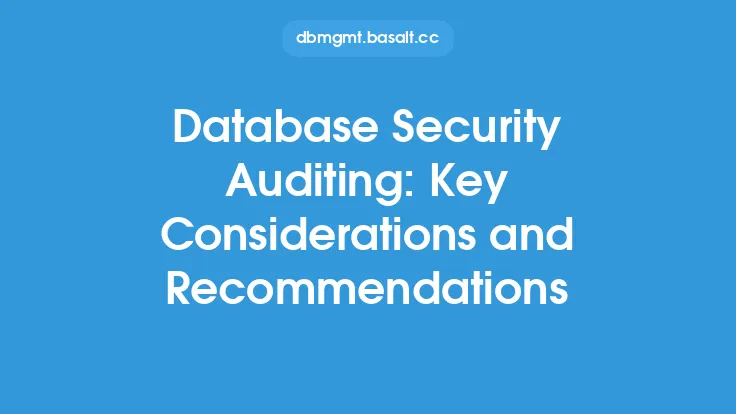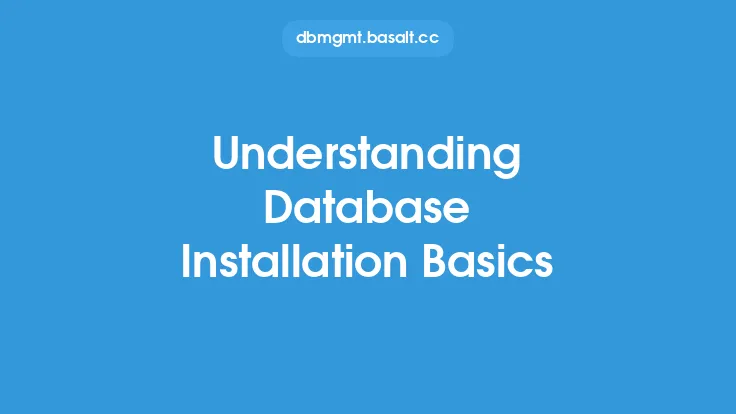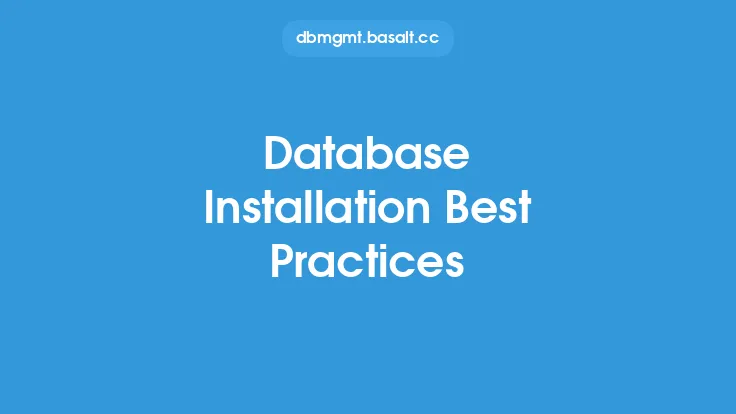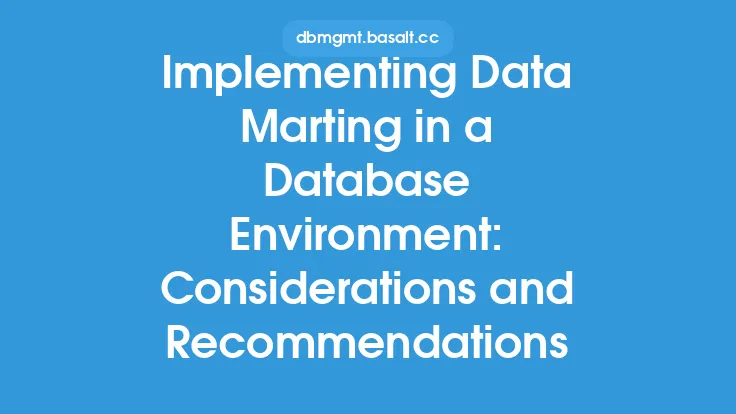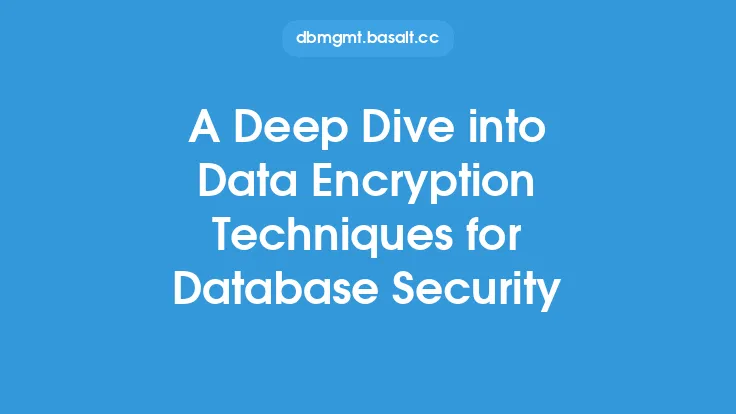When installing a database, security is a critical consideration that should not be overlooked. A secure database installation is essential to protect sensitive data from unauthorized access, theft, or damage. In this article, we will delve into the security considerations that should be taken into account when installing a database, highlighting the key factors that can help ensure a secure and reliable database setup.
Introduction to Database Security
Database security is a multifaceted concept that encompasses various aspects, including authentication, authorization, encryption, and access control. A secure database installation should be designed to prevent unauthorized access, protect data from tampering or theft, and ensure the integrity and availability of the data. To achieve this, it is essential to consider the security requirements of the database during the installation process, taking into account the type of data being stored, the users who will be accessing the data, and the potential threats to the database.
Authentication and Authorization
Authentication and authorization are critical components of database security. Authentication refers to the process of verifying the identity of users who attempt to access the database, while authorization determines the level of access that users have to the database and its resources. When installing a database, it is essential to configure authentication and authorization mechanisms to ensure that only authorized users can access the database and perform specific actions. This can be achieved through various methods, including password-based authentication, Kerberos authentication, and role-based access control (RBAC).
Encryption and Access Control
Encryption is another crucial aspect of database security, as it protects data from unauthorized access and tampering. When installing a database, it is essential to configure encryption mechanisms to protect data both in transit and at rest. This can be achieved through various methods, including Transport Layer Security (TLS) and Advanced Encryption Standard (AES). Access control is also critical, as it determines which users have access to specific data and resources within the database. When installing a database, it is essential to configure access control mechanisms, such as grants and privileges, to ensure that users only have access to the data and resources they need to perform their tasks.
Network Security Considerations
Network security is also a critical consideration when installing a database. The database should be installed on a secure network, with firewalls and intrusion detection systems in place to prevent unauthorized access. The database should also be configured to use secure communication protocols, such as TLS, to protect data in transit. Additionally, the database should be installed behind a firewall, with only necessary ports and services exposed to the outside world.
Operating System Security Considerations
The operating system on which the database is installed is also a critical factor in database security. The operating system should be configured to ensure that the database is running in a secure environment, with adequate security patches and updates applied. The operating system should also be configured to use secure protocols, such as Secure Shell (SSH), to protect access to the database. Additionally, the operating system should be configured to use access control mechanisms, such as SELinux or AppArmor, to restrict access to the database and its resources.
Database Configuration Security Considerations
The database configuration is also a critical factor in database security. The database should be configured to use secure defaults, such as secure passwords and authentication mechanisms. The database should also be configured to use secure storage mechanisms, such as encrypted storage, to protect data at rest. Additionally, the database should be configured to use secure auditing and logging mechanisms, to track and monitor access to the database and its resources.
Security Testing and Validation
Finally, it is essential to perform security testing and validation to ensure that the database installation is secure and reliable. This can be achieved through various methods, including vulnerability scanning, penetration testing, and security audits. Security testing and validation should be performed regularly, to ensure that the database remains secure and up-to-date with the latest security patches and updates.
Conclusion
In conclusion, database installation security considerations are critical to ensuring the security and reliability of a database. By considering the security requirements of the database during the installation process, and configuring authentication, authorization, encryption, and access control mechanisms, you can help protect sensitive data from unauthorized access, theft, or damage. Additionally, by considering network security, operating system security, and database configuration security considerations, you can help ensure that the database is running in a secure environment. Finally, by performing security testing and validation, you can help ensure that the database remains secure and up-to-date with the latest security patches and updates.
